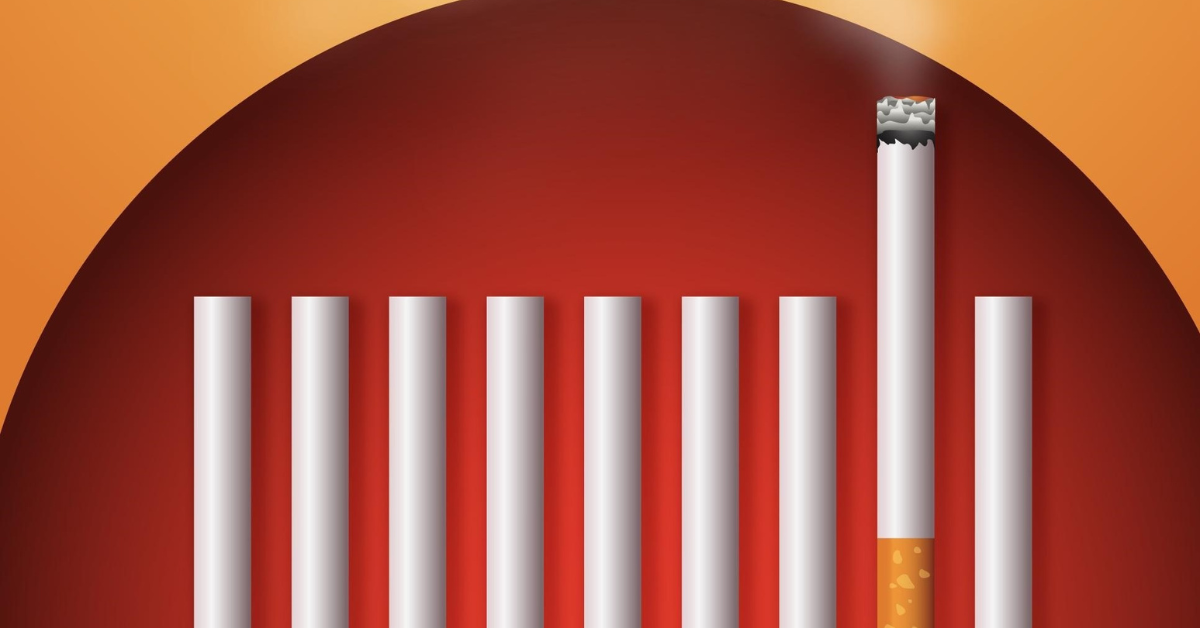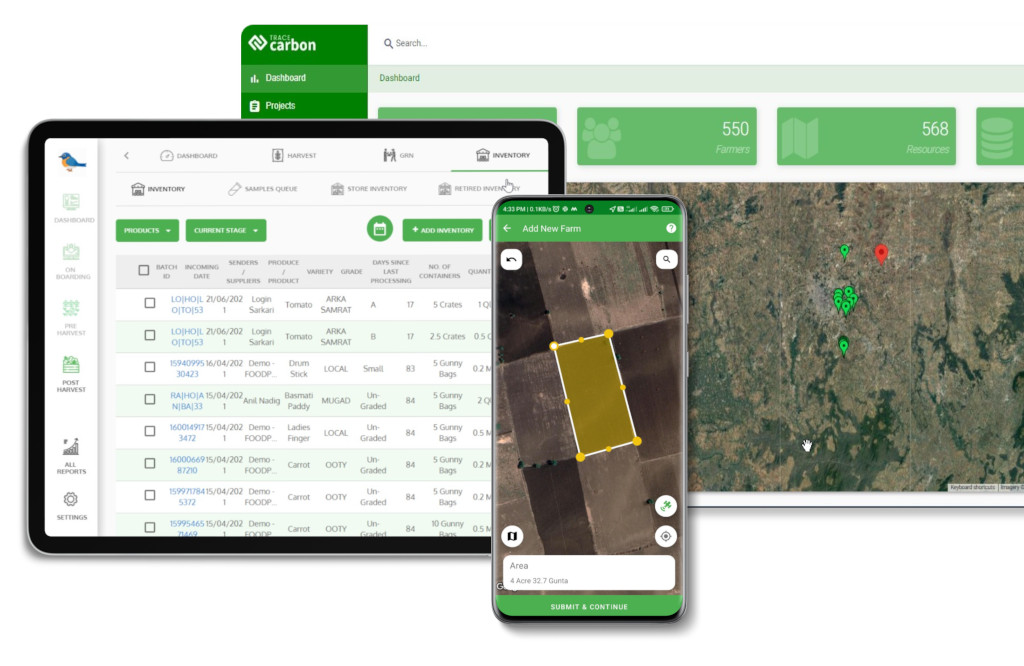Contact: +91 99725 24322 |
Menu
Menu
Quick summary: Discover how tobacco traceability ensures regulatory compliance, prevents illicit trade, and enhances supply chain transparency. Learn about global regulations, digital tracking systems, and industry best practices.

Imagine a world where one in every ten cigarettes sold is illegal—unregulated, untracked, and untaxed. This isn’t fiction; it’s a reality. For manufacturers, retailers, and governments, the lack of proper tobacco traceability is a ticking time bomb.
According to the World Health Organization (WHO), illicit tobacco trade costs governments over $40 billion in lost tax revenue annually, fueling organized crime, undermining legal businesses, and exposing consumers to counterfeit, low-quality tobacco products.
Counterfeit tobacco products often contain harmful substances beyond legal standards, endangering public health. Meanwhile, smuggled tobacco floods the market at lower prices, crippling legitimate businesses and reducing government tax collections. To combat this growing issue, governments worldwide are enforcing strict traceability regulations to monitor every tobacco product from farm to consumer. From the WHO Framework Convention on Tobacco Control (WHO FCTC) to the European Union Tobacco Products Directive (EU TPD), nations are implementing digital track-and-trace systems
Key Takeaways
Tobacco traceability is the ability to track every tobacco product—from the moment it’s produced to the time it reaches the consumer. Imagine a scenario where fake or smuggled cigarettes flood the market. Governments lose billions in taxes, businesses suffer unfair competition, and consumers end up with potentially harmful, unregulated products. This is where traceability steps in—to bring order, accountability, and trust to the industry.
Tobacco is a highly taxed product, making it a target for smuggling and tax evasion. Governments rely on traceability systems to track sales, ensuring every pack sold is legally produced and taxed. This helps prevent tax fraud and boosts public revenue for healthcare and infrastructure.
Would you smoke a cigarette if you weren’t sure where it came from? Probably not.
Traceability helps track the origin of every tobacco leaf, ensuring that only high-quality, regulated products make it to the market. If a bad batch is detected, companies can quickly recall affected products, protecting consumers.
Counterfeit tobacco is a major problem—cheap knock-offs are often made using substandard or even dangerous ingredients. By implementing track-and-trace systems, authorities and companies can verify product authenticity, making it harder for illegal operators to sneak fake products into the tobacco supply chain.
Beyond compliance, traceability plays a key role in sustainability efforts. Many tobacco companies are adopting sustainable tobacco programs. By integrating traceability with sustainability programs, the tobacco industry can work towards a more responsible, ethical, and environmentally friendly supply chain, while also maintaining regulatory compliance and business credibility.
To effectively track tobacco products, companies and regulators rely on three main technologies:
Each tobacco product is given a Unique Identifier Code (UID)—think of it like a digital fingerprint. This could be:
These identifiers help track each pack, carton, and case individually, ensuring real-time monitoring of their movement.
Once products are labeled, they must be digitally tracked across the supply chain—from manufacturing plants to distributors, retailers, and final consumers.
This makes it easier to detect illegal trade routes and prevent stolen or fake products from entering the market.
All traceability data must be securely stored for audits, tax verification, and compliance checks. Companies often use:
This prevents fraud, ensures accountability, and helps law enforcement track down illegal operators.
If you’re a manufacturer, distributor, or retailer, tobacco traceability isn’t just a regulatory requirement—it’s a business necessity. By adopting a strong traceability system, you can:
With governments tightening regulations and digital tracking becoming the new standard, now is the time to implement robust traceability solutions.
Tobacco traceability is becoming a must-have for businesses in the industry. Governments worldwide are tightening regulations to combat illicit trade, ensure tax compliance, and improve consumer safety.
If you’re a manufacturer, distributor, or exporter, understanding these regulations is crucial to staying compliant and avoiding hefty fines. Let’s break down the major global tobacco traceability regulations—in simple terms.
The WHO FCTC is the world’s first public health treaty dedicated to controlling tobacco consumption and trade. One of its key goals? Eliminating illicit tobacco trade through track-and-trace systems.
What It Requires
✔ Unique tracking codes on all tobacco products
✔ Digital tracking from production to final sale
✔ Data storage for at least 5 years
✔ Reporting to regulatory bodies for transparency
Why It Matters
Many countries use WHO FCTC guidelines as a foundation for their own tobacco laws.
The EU TPD (Directive 2014/40/EU) enforces strict traceability to prevent tax evasion and illegal tobacco sales within the European Union.
What It Requires
✔ Unique Identifiers (UIDs): Each tobacco pack must have a unique tracking code
✔ End-to-End Tracking: Every movement (manufacturer ➝ distributor ➝ retailer) must be logged
✔ Government-Approved Data Storage: Information must be stored for at least 5 years
✔ Security Features: Products must have tamper-proof packaging & anti-counterfeiting measures
Why It Matters
If you’re exporting tobacco to Europe, you must comply with EU TPD rules.
In the United States, the FDA (Food and Drug Administration) regulates tobacco under the Family Smoking Prevention and Tobacco Control Act.
What It Requires
✔ Unique Serial Numbers for each product
✔ Detailed Record-Keeping: Sales, distribution, and production records must be maintained for 4+ years
✔ Tracking for Recalls & Inspections: The FDA can demand supply chain records at any time
✔ Retail Compliance: Strict age verification and marketing restrictions
Why It Matters
If you’re selling or exporting tobacco in the U.S., you must comply with FDA regulations to avoid fines or product bans.
India is the second-largest producer of tobacco in the world, and its trade is regulated by the Tobacco Board of India under the Ministry of Commerce & Industry.
What It Requires
✔ Mandatory Registration: All growers, buyers, and exporters must register with the Tobacco Board
✔ Electronic Auction System: All Flue-Cured Virginia (FCV) tobacco is sold via a digital auction platform to ensure fair trade
✔ Production Limits: The government controls the amount of tobacco grown to match demand and prevent overproduction
✔ Export Approvals & Quality Checks: Strict regulations on quality, pesticide use, and export standards
Why It Matters
If you’re involved in tobacco farming, export, or trade in India, compliance with the Tobacco Board’s rules is essential.
Tobacco traceability is rapidly expanding in other regions as well.
Key Trends & New Regulations
✔ China: Implementing stricter track-and-trace laws for domestic and export tobacco
✔ UAE & Saudi Arabia: Mandatory digital tax stamps for all tobacco products
✔ South Africa & Nigeria: Strengthening track-and-trace to fight illicit trade
✔ Indonesia & Philippines: Developing QR-code-based traceability systems
Why It Matters
Tobacco traceability is no longer just about tracking products—it’s about ensuring compliance, preventing counterfeit trade, and making supply chains more efficient.
Governments worldwide are enforcing strict regulations (WHO FCTC, EU TPD, US FDA) to fight illicit trade and tax evasion. But staying compliant doesn’t have to be overwhelming. With the right technology, businesses can streamline traceability, automate compliance, and enhance transparency.
Imagine each pack of cigarettes having its own digital fingerprint—that’s exactly what Unique Identifier Codes (UIDs) and QR codes do.
How It Works
Why It’s Important
What if there was a way to store tobacco supply chain data that no one could alter or fake? That’s where Blockchain technology comes in.
How It Works
Why It’s Important
Want to track your tobacco products from factory to store in real time? That’s exactly what RFID (Radio-Frequency Identification) and IoT (Internet of Things) sensors enable.
How It Works
Why It’s Important

Tobacco is a major cash crop in India, and ensuring fair pricing and transparency in its trade is crucial for farmers and buyers alike.
To tackle issues like price manipulation, middlemen exploitation, and lack of transparency, the Tobacco Board of India introduced an Electronic Auction (E-Auction) System for Flue-Cured Virginia (FCV) tobacco.
This digital platform has revolutionized tobacco trading, ensuring that farmers get fair prices and buyers have direct access to high-quality products.
The Tobacco Board’s Role in Regulating FCV Tobacco Trade
The Tobacco Board of India, under the Ministry of Commerce & Industry, is responsible for:
✔ Regulating FCV tobacco production & sales
✔ Ensuring fair pricing & transparency
✔ Maintaining export quality standards
✔ Supporting around 80,000–85,000 tobacco farmers
Since FCV tobacco is a major export crop, the Board works to ensure that:
Before the E-Auction system, farmers had to rely on middlemen, often leading to unfair pricing and lack of control over their sales. But with digital auctions, things have completely changed.
The electronic auction system is a fully digital trading platform that connects farmers directly with buyers.
How the E-Auction Works
1️. Farmers bring their FCV tobacco to an authorized Tobacco Board auction center.
2️. Tobacco Board officials grade the tobacco based on quality factors like color, texture, and nicotine content.
3️. Each batch is given a unique identification code and entered into the E-Auction system.
4️. Buyers (exporters, cigarette manufacturers, traders) log into the system and place bids in real-time.
5️. The highest bidder wins, and the price is immediately recorded in the system.
6️. Payments are processed digitally, ensuring no delays or price manipulation.

Tobacco traceability is critical for preventing illicit trade, ensuring tax compliance, and maintaining quality standards. However, businesses in the tobacco supply chain—from manufacturers to exporters—face several challenges in implementing effective track-and-trace systems.
The Challenge
Tobacco products are grown in one country, processed in another, and sold globally. Each country has different regulations, making compliance complicated.
For example:
Managing different compliance rules, tracking shipments across borders, and ensuring end-to-end visibility is a major hurdle.
The Challenge
Large corporations can afford advanced track-and-trace systems, but small and medium-sized manufacturers (SMEs) struggle with:
This can create an unequal playing field, where only big brands can comply while smaller businesses risk penalties or exclusion from major markets.
The Challenge
TraceX is a blockchain-powered traceability solution designed to provide end-to-end visibility, security, and compliance for industries like agriculture, food, and tobacco. By leveraging tamper-proof blockchain technology, TraceX enables businesses to track products from source to shelf, ensuring transparency in the supply chain. It helps manufacturers, exporters, and retailers comply with stringent regulations like WHO FCTC, EU TPD, and US FDA tobacco traceability requirements by securely recording every transaction, from farming and processing to distribution and retail. With real-time tracking, automated compliance reporting, and AI-powered analytics, TraceX empowers businesses to eliminate counterfeiting, optimize logistics, and build consumer trust while meeting global regulatory standards.
As global regulations tighten and consumer demand for ethical sourcing grows, tobacco traceability is no longer optional—it’s essential. Implementing robust traceability solutions ensures compliance with stringent laws, mitigates risks, and fosters transparency across the supply chain. By leveraging digital tracking technologies, businesses can safeguard product authenticity, prevent illicit trade, and build trust with consumers and regulators alike. The future of the tobacco industry lies in traceability—embrace it today to stay ahead.
Traceability ensures compliance with international regulations, prevents counterfeit products, and enhances supply chain transparency for businesses and consumers.
Digital solutions provide real-time tracking, automated compliance reporting, and secure data storage to streamline regulatory adherence and operational efficiency.
Major regulations include the WHO FCTC Protocol, the EU Tobacco Products Directive (TPD), and country-specific anti-illicit trade laws requiring track-and-trace systems.
